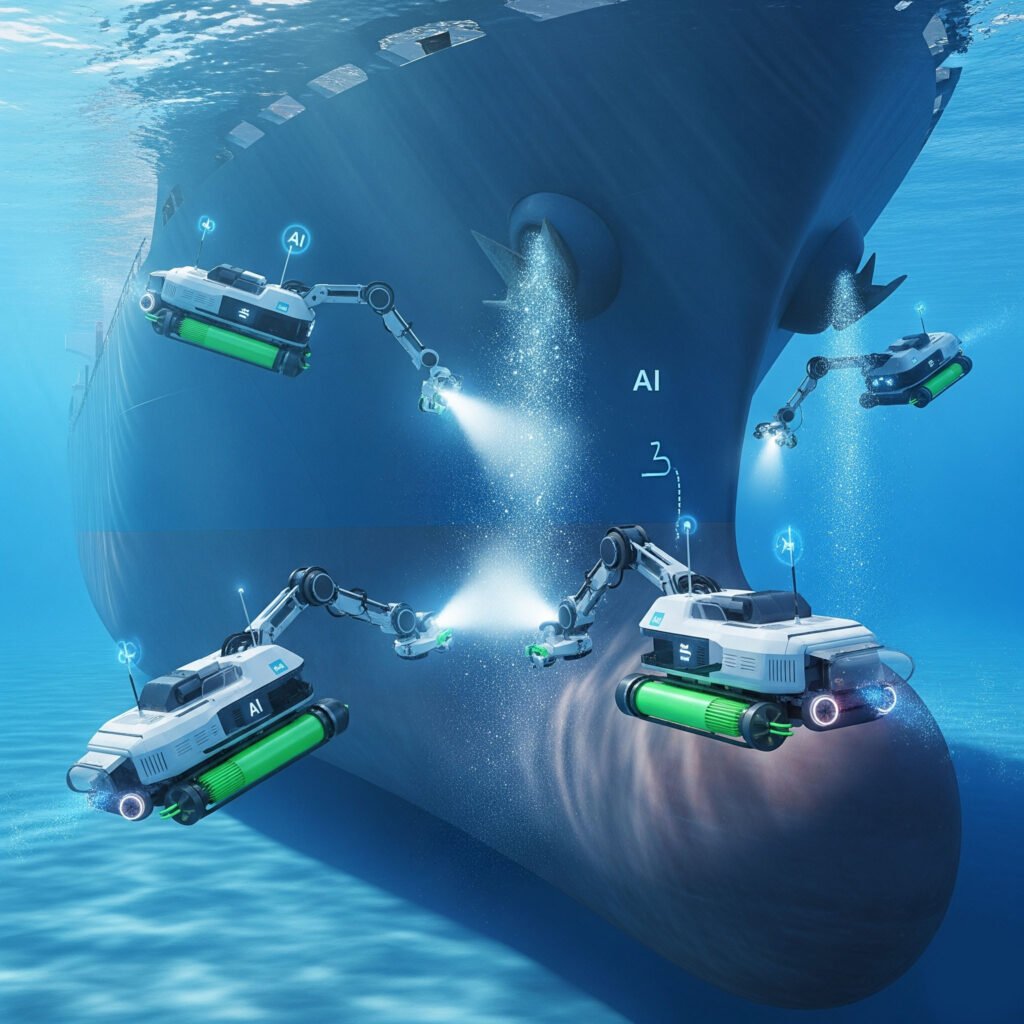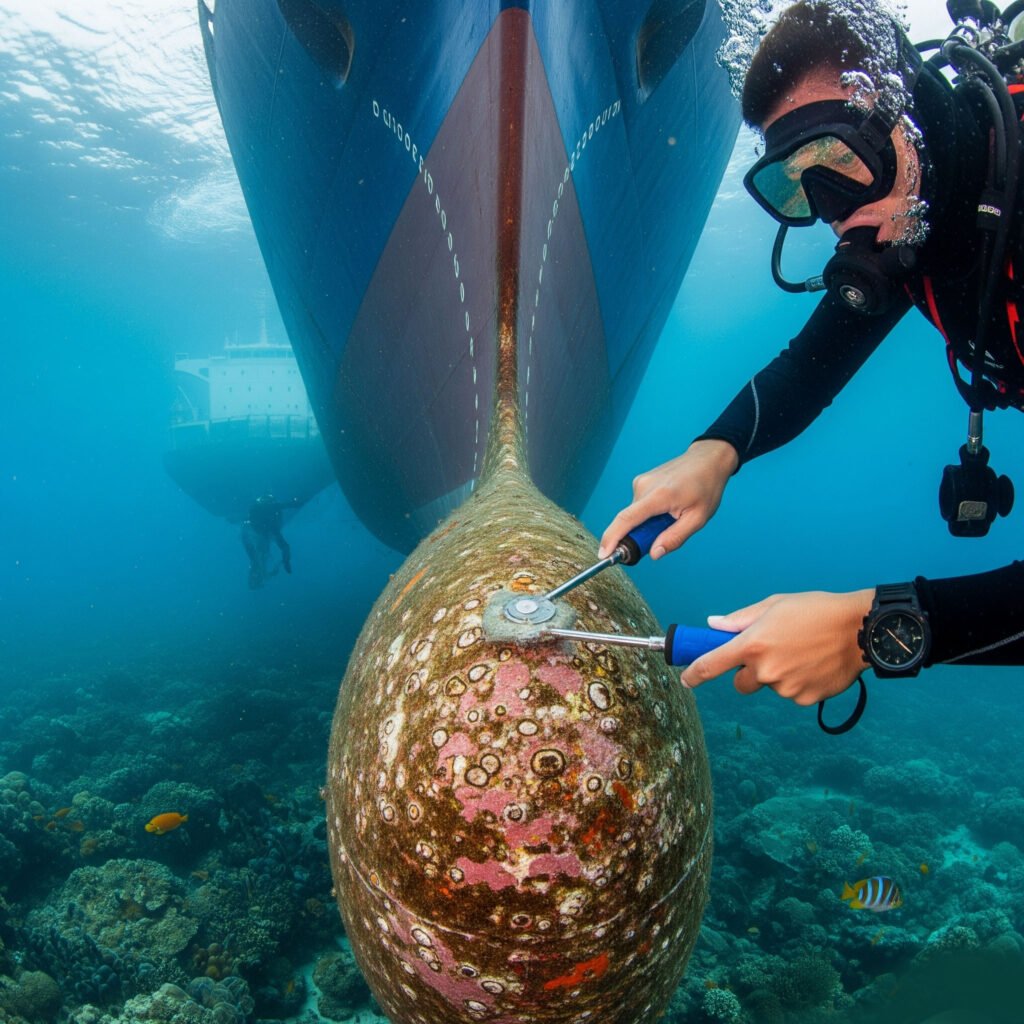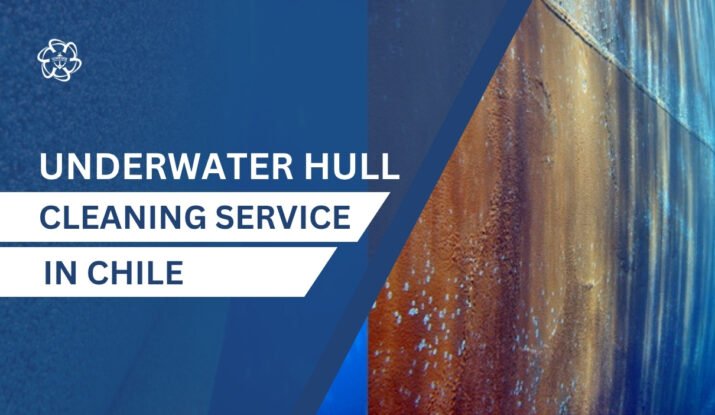Underwater Hull Cleaning in Chile. Have you ever watched your vessel’s fuel gauge drop faster than expected, despite a smooth sailing route? Or noticed that your ship isn’t reaching its usual speed? The culprit could be lurking in plain—or rather, not-so-plain—sight: the hull. Marine biofouling—an uninvited club of barnacles, algae, and other microorganisms—can stealthily drag your vessel’s efficiency into the depths.
Enter Chile. Why has this long, slender country on South America’s Pacific edge become a marine maintenance magnet? With a pristine coastline, cutting-edge cleaning methods, and green-minded practices, Chile is turning heads in the global shipping community. In this piece, we’ll go deeper into why Chile is emerging as a leader in Underwater Hull Cleaning in Chile, explain the science and economics behind it, highlight pioneering services, and show how all of this can benefit your vessel’s bottom line.
The Stakes Are High: Why Underwater Hull Cleaning in Chile Isn’t Optional
If your ship’s hull isn’t smooth, you’re not just losing sleekness—you’re losing efficiency.
- Performance Hits: Rough hulls make waves behave poorly around your vessel, increasing drag. Simply put, if your ship feels sluggish, the hull is likely underperforming.
- Fuel Wallet Drain: Biofouling can hike your fuel usage by as much as 40%, especially with heavy, loose coatings of barnacles or kelp.
- Compliance Jump: The International Maritime Organization (IMO) is tightening regulations. Ships are required to manage biofouling risks, and well-maintained underwater hulls can help you tick those boxes.
- Environmental Responsibility: A neglected hull adds to greenhouse gas emissions. Cleaning it helps reduce carbon output—something more governments and ship operators demand today.
Essentially, neglecting hull maintenance is like letting your car’s tires deflate and complaining about mileage. You can’t fix your ship’s performance without cleaning what’s holding it back.
Why Chile? The Allure of Geography, Technology & Expertise
1. Coastline & Port Advantage
Spanning over 4,000 miles, Chile’s coast boasts robust, accessible harbors—Valparaíso, San Antonio, Talcahuano, Punta Arenas, and more. These ports aren’t just scenic—they’re functional, equipped with calm bays and dedicated zones for diver access and hull maintenance operations.
2. Cutting‑Edge Cleaning Tech
Gone are the days of dangerously abrasive scraping. Chilean firms now use:
- Cavitation water jets – High-pressure water cleans without harming antifouling paint.
- Non-abrasive brush carts – Soft bristles gently clean without damaging hull coatings.
- ROV (Remotely Operated Vehicles) – Robots that scrub, reducing dependence on risky dive operations.

These methods preserve hull integrity, lengthen antifouling effectiveness, and minimize regrowth.
3. Transparent Quality with HD Inspections
Most providers offer real-time underwater video feed, so you can watch the cleaning live and verify results immediately. Want to double-check a stubborn patch? No problem. Need before & after proof? Done.
4. Skilled, Certified Workforce
Chile’s cleaning professionals are often IMCA- or ADCI-certified, ensuring international safety and quality standards. These experts are familiar with local marine species and conditions—an edge when cleaning without harming sensitive ecosystems.
A Closer Look: Chile’s Premier Underwater Hull Cleaning in Chile Providers

A. Cleanship Chile
A household name in naval circles, Cleanship Chile combines eco-conscious policy with next-gen cleaning hardware.
What they offer:
- ROV-based Underwater Hull Cleaning in Chile
- Propeller polishing
- Underwater HD video inspection
- Biocide-free, closed-loop filtration
Client outcomes:
- Fuel savings of up to 20%
- Faster port turnarounds
- Fewer delays from dry-docking
It’s akin to giving your vessel a facelift while ensuring it runs smoother for longer.
B. SubSea Clean Valdivia
Operating in Chile’s cooler southern waters, SubSea Clean Valdivia excels in:
- Emergency deployment
- Cold-water cleaning expertise
- Handling special coatings for Antarctic transits
When time is of the essence—or you’re bound for remote destinations—this provider is ready to spring into action.
C. Marintec Services – Punta Arenas
Expertise in meeting extreme conditions. Catering to ice-class ships and offshore fisheries alike, Marintec offers:
- Coating thickness and integrity assessments
- Underwater Hull Cleaning in Chile for cold-climate vessels
- HD visual reports
They combine rugged reliability with nuanced care.
Economics & ROI: Hard Numbers, Big Savings
Let’s break it down—Underwater Hull Cleaning in Chile is an investment, not an expense.
- Fuel Efficiency: On average, ships experience a 10% to 40% reduction in fuel consumption post-cleaning, depending on the level of biofouling removed.
- Operational Speed: With reduced drag, vessels move more efficiently, shaving days off long-haul journeys and enabling quicker turnarounds at port.
- Maintenance Savings: Fewer dry-docking cycles, reduced wear on engines, and longer intervals between maintenance result.
- Port Compliance: Clean hulls meet port-state control standards faster, leading to fewer delays and no costly fines.
Real-world case studies from companies like Cleanship Chile show tangible results. Many international shipping firms have reported a 20–25% drop in fuel usage and improved propulsion system longevity after scheduled underwater cleaning.
When done right—and with the right partner—it’s not just about avoiding losses; it’s about unlocking long-term profitability and smoother voyages ahead.
The Cleaning Process: What Shipowners Should Expect
- Pre‑cleaning assessment – Initial scan to pinpoint fouling zones.
- Cleaning stage – Divers or ROVs execute with real‑time visual monitoring.
- Waste capture – Closed-loop filtration in action, preventing marine pollution.
- Post-cleaning footage – Detailed video logs before departure.
- Report & recommendations – Insights on hull health, coating condition, re-coat schedules.
This process is designed for transparency, compliance, and maximum ROI.
Challenges & Considerations
- Scheduler availability: Peak shipping season means early bookings are essential.
- Coating checks: Older hulls may need closer scrutiny to avoid risks.
- Remote region logistics: Soaring costs and wait times in places like Punta Arenas are possible, but offset by local expertise.
Making the Switch: Is Chile Right for You?
Ask yourself:
- Are you navigating the Pacific route or heading towards Panama?
- Are you managing cost-sensitive or eco-aware fleets?
- Is regulatory compliance with IMO standards a priority?
- Do you want to monitor cleaning results in real time?
If you answered “yes” to any of these, Chile isn’t just an option—it makes strategic sense.
Conclusion
- The problem: Biofouling silently kills performance and hikes fuel use.
- The solution: Underwater Hull Cleaning in Chile that’s swift, effective, and environmentally responsible.
- Why Chile: Extensive ports, innovative tech, certified pros, and green protocols.
- The payoff: Lower fuel bills, faster voyages, extended maintenance cycles, and clean compliance.
When you bring your ship to Chile for Underwater Hull Cleaning in Chile, you’re not just putting on a fresh coat—you’re investing in data-driven performance, compliance-ready operations, and ocean-respecting stewardship.
Step off the anchor. Propel your ship toward cleaner, smarter seas—Chile’s ready when you are.
FAQ:
Q1. How often should Underwater Hull Cleaning in Chile be done?
Typically, every 3–6 months, depending on vessel type, voyage patterns, and fouling rates.
Q2. Is it legal across all Chilean ports?
Yes—when carried out by licensed, IMO‑compliant providers in designated zones.
Q3. Will my antifouling coating suffer during cleaning?
No—non‑abrasive tools and closed‑loop systems protect your coatings and hull structure.
Q4. Is Chile’s cleaning compliant with IMO and ISO standards?
Absolutely. Most providers follow IMO Biofouling Guidelines and earn ISO 14001 environmental certifications.
Q5. Can I review the cleaning results?
Yes—real-time HD video inspections are standard, along with detailed post-service reports.


